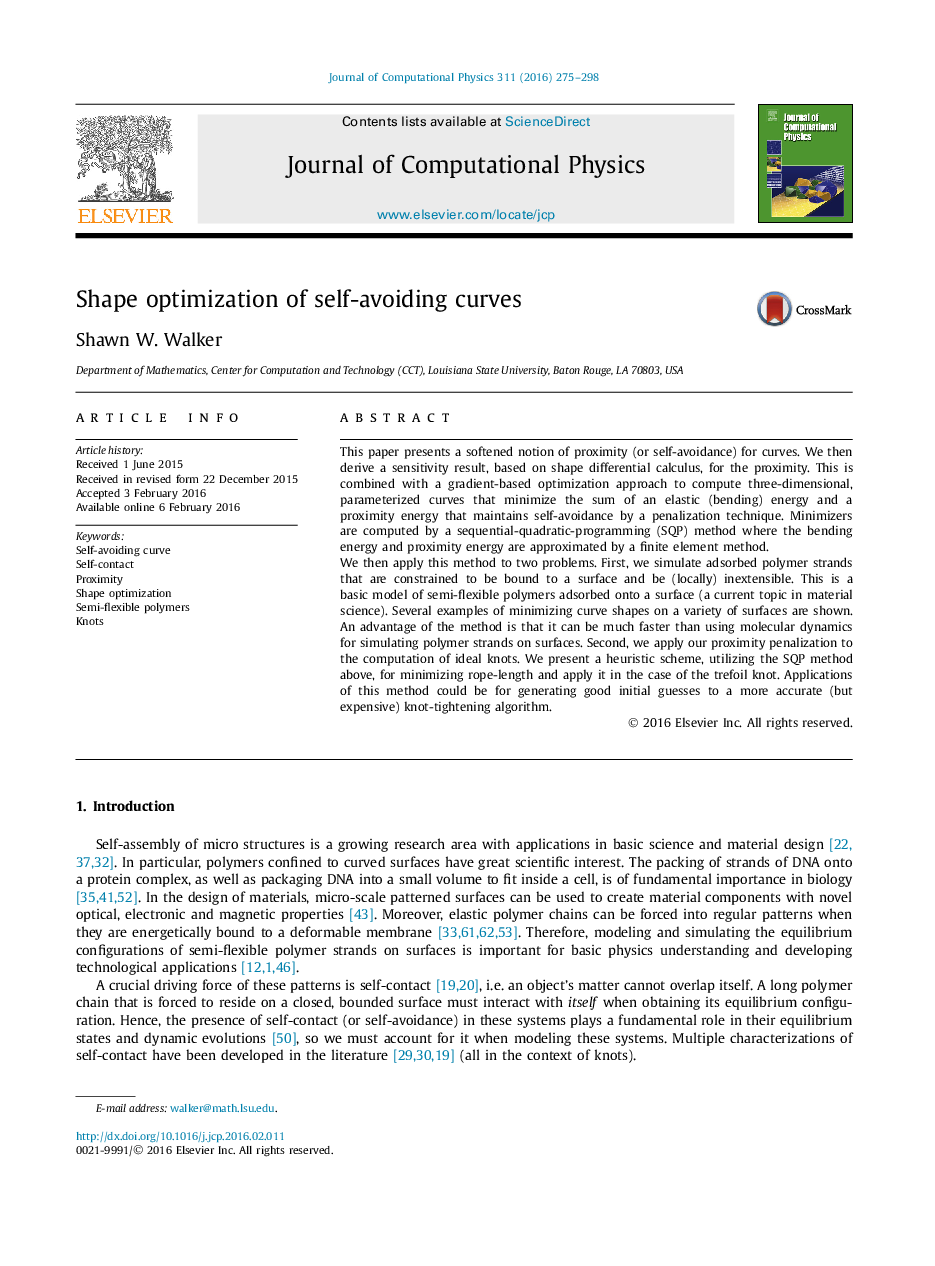| Article ID | Journal | Published Year | Pages | File Type |
|---|---|---|---|---|
| 6930416 | Journal of Computational Physics | 2016 | 24 Pages |
Abstract
We then apply this method to two problems. First, we simulate adsorbed polymer strands that are constrained to be bound to a surface and be (locally) inextensible. This is a basic model of semi-flexible polymers adsorbed onto a surface (a current topic in material science). Several examples of minimizing curve shapes on a variety of surfaces are shown. An advantage of the method is that it can be much faster than using molecular dynamics for simulating polymer strands on surfaces. Second, we apply our proximity penalization to the computation of ideal knots. We present a heuristic scheme, utilizing the SQP method above, for minimizing rope-length and apply it in the case of the trefoil knot. Applications of this method could be for generating good initial guesses to a more accurate (but expensive) knot-tightening algorithm.
Related Topics
Physical Sciences and Engineering
Computer Science
Computer Science Applications
Authors
Shawn W. Walker,
